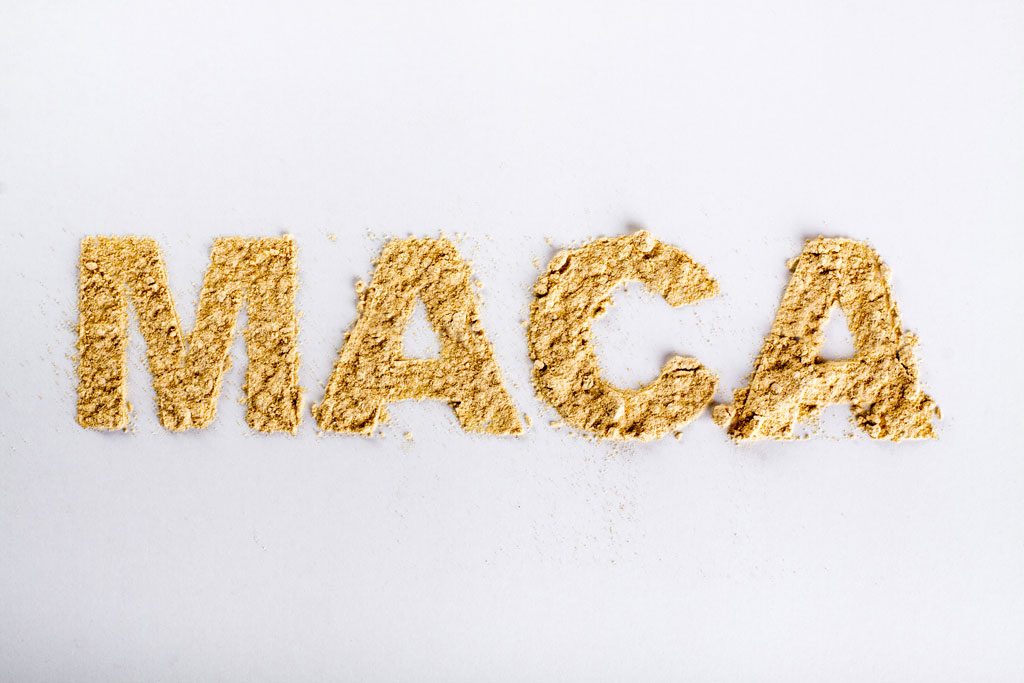
For over two millennia, the native people of the Andes region have been using maca, also called Peruvian Ginseng, for longevity, fertility, and to treat a wide variety of ailments. Maca is typically baked, dried, powdered, mixed with milk, or cooked in various dishes. In recent years, scientists and physicians have gathered scientific evidence and performing clinical studies on the nutritional benefits of maca root as a herbal supplement.
An overall examination of the effects of maca consumption, particularly in its powdered form, reveals that there is a great deal of scientific evidence for the health benefits of maca.
This is your ultimate guide to Maca: Learn about maca nutritional and health benefits, its impact on quality of life for many, and the proven effectiveness of maca for treating various health issues and conditions.
What is Maca?
Quick Facts:
- Scientific Name: lepidium meyenii, species peruvianum
- Primary Location: Andes Mountain region, Peru.
- Vital minerals: contains high concentrations of calcium, magnesium, sodium, silica, manganese, copper, zinc, vanadium and others.
- Nutrient value: contains concentrations of thiamine, riboflavin, ascorbic acid, protein, carbohydrates, lignans, glucosinolates, phytosterols, and alkaloids.
Maca is a member of the same plant family as both mustard and broccoli. It looks a bit like a large radish ranging in color from white to black, and has a flavor that is described as being similar to butterscotch. The color of maca root powder is often used to determine what is most effective in treating or alleviating, and the three main categories are black, red, and yellow root maca.
The growing cycle is annual, and maca has only been successfully cultivated at high altitude in Peru. Preparing maca as a food is not dissimilar to the preparation of potatoes, with baking and roasting being some of the more popular methods.
Often, the roots are dried for long term storage and then boiled later on with milk to create a porridge, or they can be ground for medicinal use, added as starch to various dishes, eaten, and dried maca root is even used in a fermented Peruvian beverage called maca chicha.
The maca species most studied by researchers, physicians, and herbalists are unique to the Andes region of Peru. Planning on supplementing with Maca? Make sure you’re using only maca that has been verified as the peruvianum species. Lepidium grows in many places in the world, but the lepidium peruvianum species is the primary form of maca root that has been verified as effective through scientific study.
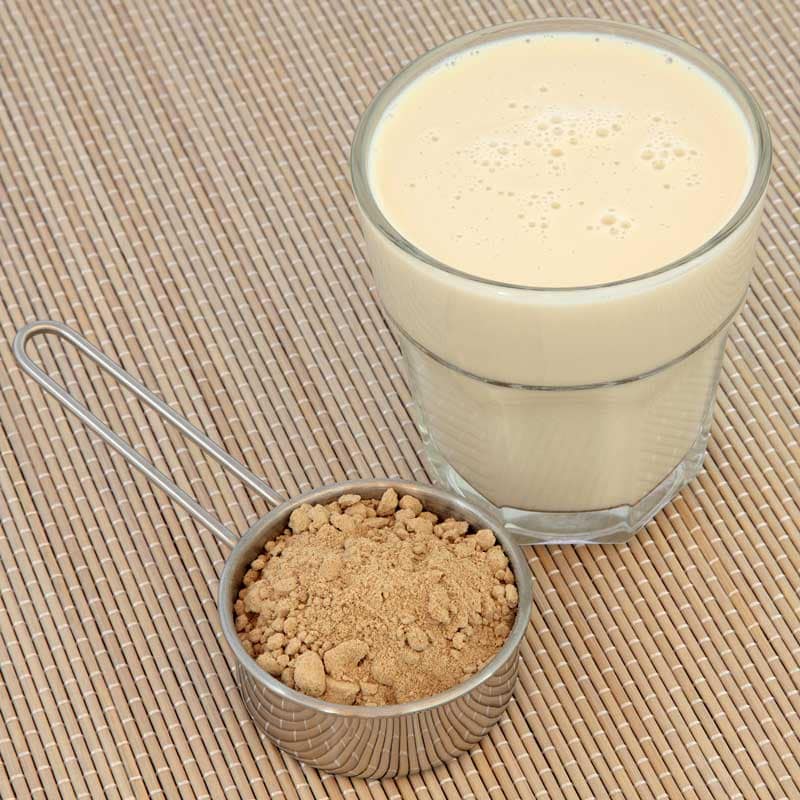
Maca Research
The title of chief pioneer and champion of maca research has long been attributed to Peruvian scientist Dr. Gloria Chacon. Born in 1940, Chacon completed the majority of her research on maca as a part of her dissertation when she was scarcely twenty years old.
In her dissertation, Chacon identified 13 distinct phenotypes of maca, and established the methodology for grading and distinguishing these phenotypes by color. Additionally, Chacon is responsible for identifying and cataloging the various nutrients, minerals, and general physical constituents of maca and its phenotypes.
Chacon also isolated a specific species of maca that is both genetically and geographically distinctive to her native Peru. Named lepidium peruvianum, this is considered to be the chief example and first choice in terms of medicinal effectiveness out of all the many kinds of maca that grow in Peru. As a means of honoring her for her work, the Museum of Natural History in Peru named this specific species lepidium peruvianum Chacon in 1993.
Maca benefits
While there are 13 identified phenotypes of maca currently identified as genetically distinct from each other, most phenotypes fall into three different varieties: yellow, red, and black.
The Yellow variety of lepidium meyenii is generally considered lower grade and works well as a general supplement for hormone imbalance and as a plant-based steroid. It possesses similar effects to the red and black varieties but is generally considered less potent.
Red maca is typically more effective as a hormone balancer and is shown to provide better relief for symptoms of menstruation and menopause in women. Most herbalists, researchers, and doctors recommend red maca primarily for women as opposed to yellow or black. Some men take red maca as it has been shown to reduce the mass of an enlarged prostate when taken regularly. A study from 2015 found that maca reduces blood pressure and depression in postmenopausal women.
Black maca is considered to be the most potent when used as an aphrodisiac or energy supplement, and is taken by many athletes or men and women who suffer from a lack of libido or sexual dysfunction. There is some research to indicate that the black variety also stimulates sperm production and motility in men when taken regularly over time, and black maca is generally the species that is taken for fertility and virility in terms of historical use.
Again, all three varieties provide the desirable medicinal effects for which maca is known, but it is important to choose which variety of maca to take if you are looking for specific results. Talk to a nutritional specialist and/or a natural medicine expert about which variety of maca is best for you based on your wants and needs.
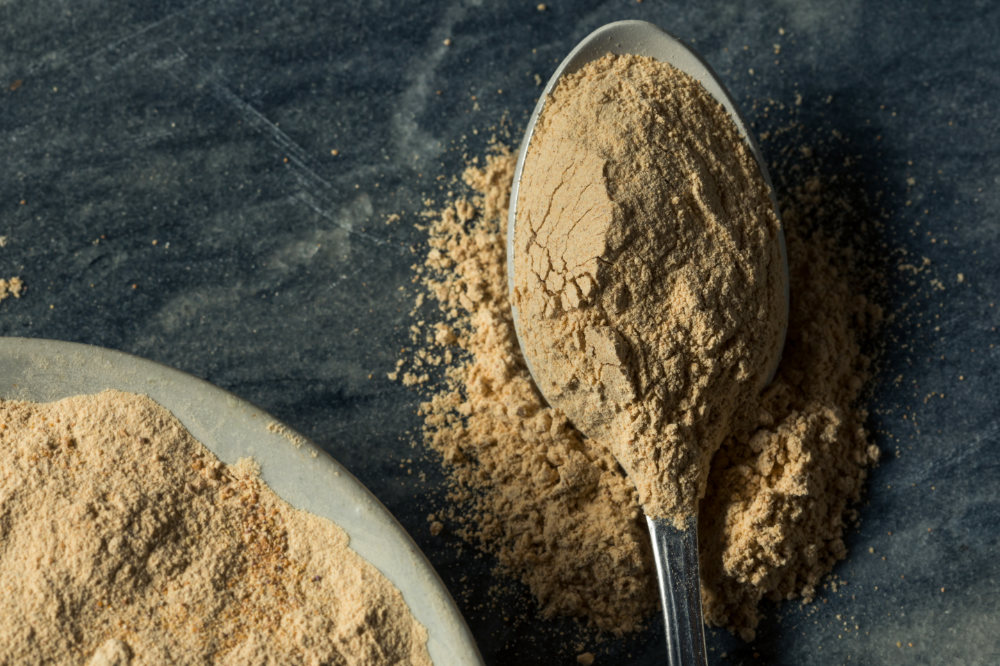
Maca for Menopause
Over the years, many doctors and scientists have discovered that taking a powdered maca supplement is beneficial to alleviating many of the symptoms of menopause. Researchers have found that menopausal women who regularly ingested maca during menopause experienced fewer hot flashes, sleep disruptions, and instances of depression than menopausal women who were not taking maca.
Findings from this study revealed that those women taking maca displayed a decreased variance in hormone levels versus women who were not taking maca during menopause. These findings would indicate that maca helps women maintain a better hormone balance when it is added to their diet as a supplement, and thus maca provides natural relief from menopausal symptoms, and showed to be somewhat effective as an alternative to traditional hormone therapy. The same findings can also be applied to the consideration of maca for perimenopause.
Menstruation Symptoms
Several studies have been conducted regarding the effectiveness of reducing the severity of menstruation symptoms in women by taking a regular supplement of maca root powder.
Improved Sexual Function
Both men and women have experienced improvements in their sex life when regularly taking maca as a dietary supplement. Studies of men taking a 1500 to 3000 mg per day experienced increased sexual desire, arousal, lower incidence of erectile dysfunction, and further study revealed that many of the study subjects displayed increased sperm production and motility with regular maca intake.
Studies of women taking similar doses of maca showed a significant increase in desire and arousal, and further study revealed that it also alleviated the symptoms of reduced libido in women taking SSRIs for anxiety and depression. Furthermore, studies conducted for both sexes have been double blind (best prevention of bias in results), and have been run on a wide spectrum of demographics over multiple years.
All in all, powdered maca, taken as a dietary supplement has shown scientific and anecdotal evidence that it enhances and improves sexual desire and function and that it may even have some impact on overall fertility in both sexes.
Aphrodisiac
There are no known studies about the effectiveness of maca as an aphrodisiac, or sexual pleasure enhancer, but all studies indicate that maca contains fatty acids and both zinc and iodine, all of which have been shown in scientific studies to increase arousal and sexual desire. Sadly, the jury is still out on whether or not maca is an aphrodisiac at this time, but there is a great deal of evidence to show that it does supplement healthy sex. Can’t be bad, right?
Mood Booster
Maca studies have shown promise for using powdered maca as an alternative to antidepressants, and as a palliative for reactions common to taking certain antidepressants as well. There have been several double-blind studies that have shown evidence that maca has anti-depressant functions over time when consumed as a supplement in higher doses, and that it can relieve many of the sexual dysfunction symptoms common with SSRI antidepressant medication.
Alzheimer’s and Parkinson’s Treatment
There have been a number of recent studies to determine if maca provides any benefit to patients suffering from neurological conditions such as Alzheimer’s and Parkinson’s disease. Research to date shows that maca supplementation as part of treatment aids the body’s neurological system in maintaining protective sheaths over nerve and neuron endings in the nervous system and brain, slowing the effects of both diseases and reducing the severity of symptoms. Further study is still being conducted to confirm maca’s concentration-neuroprotective effects.
Skin Protection
While human trials have not yet been conducted, studies in mice and rats have shown that maca leaves applied to the skin protect from UV irradiation. This means that it is theoretically possible to use maca as a natural alternative to sunscreen, and to make skin and hair more resistant to sun damage.
Memory Function
In a number of further studies of the effects of maca on rodents, subjects displayed an increased improvement of memory function when regularly dosed with maca root, and that even in subjects with severe memory impairment, there was a significant improvement after several weeks of dosing them with black maca.These studies show promise for developing further treatment using maca for patients with Alzheimer’s or dementia.
Antioxidant Content
Maca root is rich in antioxidants, a nutrient essential to longevity, brain function, and heart health. The elevated levels of glutathione and superoxide dismutase both alleviate high triglyceride cholesterol and reduce glucose intolerance, all while aiding the production of sheathing cells in the body’s neurological system to help alleviate the effects of Parkinson’s and Alzheimer’s. Maca is essentially a triple threat in terms of treating geriatric disease and the long term effects of aging.
Ultimately, using maca as a supplement to your diet in order to treat or alleviate a malady is a decision for you and your healthcare team. Always consult a medical professional to make certain that your personal health is in a fit state to handle taking high doses of a hormonal supplement. Additionally, you should also make certain that any medications you take on a regular basis do not have any known interactions with maca.
Furthermore, you will want to research and responsibly source your maca from growers in Peru who are cultivating and selling genuine lepidium peruvianum. There are unscrupulous supplement dealers who trade in lepidium meyenii which is raised and processed outside of Peru that does not possess the same medicinal or nutritional value as the peruvianum species. Others blend genuine Peruvian maca with inferior species of maca in order to cut costs and drive up profits. Worse still, much of the maca imported from China is grown in soil that is contaminated with heavy metals and fed with water that is often considered too toxic to drink. This is not Peruvian maca and should be avoided.
Based on the studies and research, maca clearly offers benefits to people of all ages. The root vegetable offers a natural and evidence-based complementary alternative to untested pharmaceutical treatment.
Making informed decisions based on facts when it comes to your well being is key, and you should definitely give maca and its major varieties the due diligence research they deserve. However, in the long run, maca is an excellent choice for adding vigor and vitality to your daily life.
Maca is a root plant in the broccoli family that looks similar to a turnip. This delicacy and ancient root tuber comes from high in the Andes Mountains of Peru in South America where natives use it as an aphrodisiac and as a way to treat many ailments.
Types of Maca
In the supplement form, maca is generally ground into a yellow-brown powder. This then goes into a capsule or used in smoothies, cereals, protein shakes, or simply dissolved in a drink.
Roasted maca comes out of the oven as a light brown substance. You should eat this root vegetable in smaller amounts if consumed with other foods as it has a unique flavor that may overwhelm any others on your plate.
Fine ground maca also works as a cooking flour, which is how native Peruvians used maca for thousands of years. Maca flour adds a bit of an earthy and butterscotch-like flavor to foods. People unused to eating maca say it’s an acquired taste.
Maca is safe to eat raw and is most commonly consumed in powder form, which forms the basis of the supplement form of maca.
For people that don’t like the taste, the pill form has little or no taste and the root can be ingested quickly and without any food preparation. The process of gelatinization can also remove some of the bitter aftertaste.
Maca Dosage and Nutrition
As a supplement, maca comes in many dosages. A typical daily dose of dried maca extract is 450-milligram capsules taken three times per day with food. Medical studies noted no known adverse effects when people took up to 3 grams daily for four weeks.
Dosages of maca depend on many factors, such as your age, overall health and nutritional requirements. More studies must be done to determine if humans can tolerate a higher maca dosage.
Maca is high in fiber. Approximately one-fourth of the nutrient density of maca comes from fiber. Fiber is important in regulating your digestive tract, and it helps you digest your foods normally. As much as 28 grams of powder contains 133% of your daily supply of vitamin C.
If you don’t like the taste (it definitely has an acquired taste), then a maca root pill is probably your best choice. Otherwise, mix the powder with your favorite drink or put it in a smoothie. One teaspoon of maca is just 10 calories. Therefore, you can get all of the advantages without adding a lot of calories to your diet.
The nutrients in maca may cause a few adverse effects and reactions. Those negative effects are generally far and few between. Maca is generally regarded as a safe product.
Maca and Health
When you consider maca as a supplement or as a food, take into consideration the possible undesirable effects. Always consult your doctor before embarking on a diet or supplementation based on any particular new food source.
Does maca powder cause weight gain?
There are two ways in which maca powder can cause increased weight. Both involve how the supplement interacts with the human body.
The first way in which maca powder causes weight gain involves balancing the body’s natural hormones. As a cruciferous vegetable, maca works with the thyroid gland to produce certain hormones in the body. Once the hormones are balanced, the body uses this system to process foods, regulate energy levels, and deliver nutrients to the body. When your hormones are in balance and you use more energy, you may find your appetite increases.
When you increase calorie intake, you may gain more weight. This depends on several factors, but adding maca to meals may be one way in which you add a few pounds.
The second way in which maca powder helps you gain weight is through its anabolic action. Maca powder helps your muscles burn through calories more efficiently. Because of this, you get more from your workout routines. Adding muscle mass increases your weight. Getting more exercise helps you to burn more calories, which, in turn, causes you to consume more calories.
Maca powder itself doesn’t necessarily cause you to gain more weight. It’s what happens to your appetite and exercise after consuming maca powder that causes the weight gain to occur. If you eat more of the right foods and then start to exercise following a maca supplementation, then chances are you may gain weight.
The supplement can help reduce belly fat from higher cortisol (stress hormone) levels. Less belly fat can reduce your weight, but that depends on other lifestyle factors.
Maca Powder for Acne
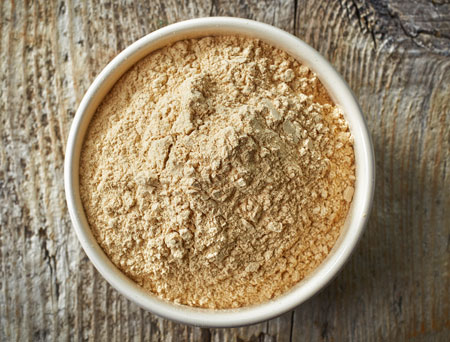
Some consumers report that one indirect results of maca usage is improvements in acne. Perhaps the reason for this involves balancing the body’s hormones. Too much acne can come from certain hormones, such as testosterone in men, during puberty. The increased hormones cause the skin to secrete more natural oils, and the oils can clog pores on the skin. The clogged pores could cause the red sores called acne.
There are a few things to consider when taking maca for acne. Maca not only balances your hormone levels, but it may also cause toxins to come out of your body. Some of these toxins can come through the skin, which could, in turn, exacerbate acne symptoms.
Once your hormone levels balance out, your acne may go away. It’s a process, and nothing happens overnight. The key to trying maca powder for acne is to start with small dosages and see what happens. If you don’t like to take pills or capsules, mix maca powder with your favorite drink. When you mix maca powder, you get to control the dosages yourself.
If you start to take maca and it causes acne, stop taking it immediately. At this point, it may be better to detoxify your body before trying to balance your body’s hormones with maca powder. Acne can occur due to several factors and not just hormones. There might be other underlying causes, so make sure you go easy on the maca supplement at first.
Can maca cause spots?
There is no evidence maca can cause spots, per se. Maca may cause acne or even spotting before a period. However, maca generally does not cause spots on the skin. You may see more toxins come out through your skin as you detoxify, but that spotting is a good thing. As with acne, spotting may happen from several sources and not just due to maca supplements.
Maca and Hair Loss
Effects rarely include hair loss. In fact, maca may increase the level of hair on your body because of its effects on keratinocyte. This substance is vital for hair growth and development. Keratinocyte helps strengthen hair follicles, and it may increase the amount of hair on your body and not just your head. Use caution when it comes to taking maca powder for hair loss!
Maca and Skin Health
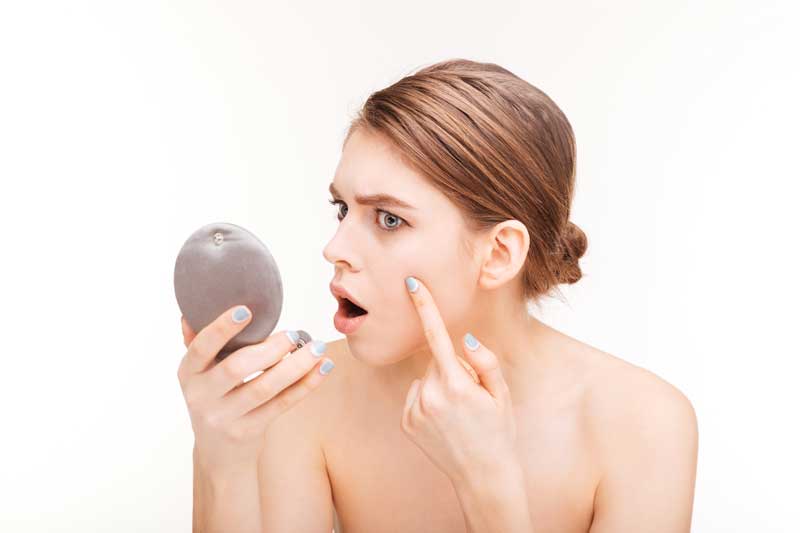
Keratinocyte also affects the skin. Maca may help the skin become firmer due to increased collagen on the outermost skin layers. The building of collagen promotes better communication among skin cells, and, therefore, it rejuvenates the skin on a regular basis. Changing the skin might affect the acne problem as discussed earlier.
Keep in mind that any changes from maca supplements might take time. Although you may see a boost in energy or mood within a few hours of taking maca powder supplements, noticing changes in the skin may take a longer period of time. Improving your skin might not just come from maca’s hormone balancing effects. You could also see improvements due to the vitamins and minerals found within this superfood.
Is Maca Estrogenic?
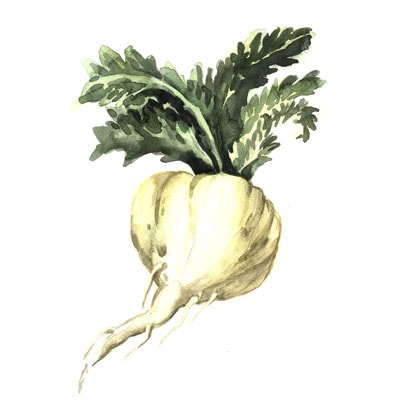
Maca plant compounds purportedly mimic the effects of estrogen. However, this is likely because maca helps balance hormones overall rather than stimulating the production of estrogen or estrogen-like compounds. Scientific studies examined how maca may change the body’s hormones as it relates to estrogen, and doctors concluded some interesting things:
First, a small clinical study involving 14 postmenopausal women showed that women taking 3.5 grams of maca root per day over 12 weeks showed a reduction of psychological symptoms and a decrease of sexual dysfunction. Researchers noted that the study found no difference among the chemical makeup of the women’s blood serum levels, yet patients reported some of the changes. The actual effects were not quantified in this study.
Other studies examined the estrogenic effects of supplements in postmenopausal women. However, it was hard to pin down whether or not it was maca reducing the symptoms of menopause or if it was some other factor entirely.
Dr. Sara Gottfried, MD, notes that maca powder can help women with symptoms such as insomnia, lack of energy, hot flashes, anxiety, depression and libido. In women, many of these symptoms are linked to estrogen levels in the body. She suggests adding some maca powder to your morning smoothie as a way to alleviate these symptoms. Maca’s hormone balancing probably comes into play here.
Libido
There is evidence that maca can increase libido in anyone, regardless of the demographic, age or gender of the person. Three studies noted that increased libido occurred following supplementation of maca. Increased libido may come from hormone balancing, better moods or better nutrition overall in patients.
The difficulty with measuring libido is that there could be psychological factors that affect someone’s sex drive. There could be unmeasurable and intangible reasons for the increased hormones that increase someone’s libido. Studies done up until 2010 were inconclusive with regards to measuring increase sex hormones in men and women when it comes to maca supplements.
Low testosterone may cause a lack of libido in men, and the same goes for an estrogen imbalance in women. Once again, maca may help balance hormones. However, the nutritional boost can also increase someone’s sex drive as overall health becomes better.
Maca and Fertility
Maca may increase fertility in men. One study examined male rats and noted that the sperm count in the rats increased after just one day of supplementation. A study performed on Peruvian men suggests maca can help increase sperm count and sperm motility, or the ability of sperm to move forward in the uterus of women.
Black maca, more so than red or yellow maca, increases sperm count and sperm production.
For women, increased fertility may come from better hormone balancing. Estrogen helps make the uterus more receptive to a fertilized egg. Once this happens, the fetus begins to grow into a baby.
Combine increased libido with increased fertility, and you may have a case for a natural fertility treatment. Be careful taking maca if you are already trying to get pregnant with in-vitro fertilization. Even a tiny amount of extra estrogen may throw off your window for getting pregnant using this method.
Maca and Thyroid
Maca contains high amounts of iodine. These higher amounts of iodine can affect your thyroid gland in adverse ways. Maca can worsen your symptoms of thyroid disease. It can also lead to goiter.
Goiter is an enlargement of the thyroid gland. This gland is in the front of your neck near the windpipe and your Adam’s apple. The enlargement of the thyroid gland can occur from a thyroid gland that is producing too much or too little of certain hormones. If you think you’re having thyroid issues, see your doctor immediately and stop taking maca supplements. A thyroid condition can lead to a host of other problems, or it could be a symptom of another underlying physical issue.
Doctors warn that supplements may contain many more thousands of times of iodine than your body usually needs. Take supplements contain iodine, including maca root, with caution if you have thyroid difficulties.
Too Much Testosterone
Maca may produce too much testosterone in your body. When that happens, the voice may deepen, more hair could grow on your face and insulin resistance might occur. For women, higher levels of testosterone might exacerbate uterine cancer or breast cancer.
If you notice any of these symptoms, stop taking maca and talk to your doctor. You may just need to make dietary changes, or there could be another underlying issue.
Hormone-Sensitive Illnesses
Maca could affect hormone-sensitive illnesses such as breast cancer, uterine cancer, ovarian cancer, endometriosis and uterine fibroids. All of these conditions relate to levels of estrogen in the body. WebMD warns you to never take maca supplements if you are prone to these conditions that are made worse by changing estrogen levels.
Allergies
As with any new supplement, maca may cause allergies. Some allergic reactions can be mild, such as itching, mild rashes or insensitivity. However, more serious allergic reactions may cause hives, shortness of breath or even anaphylaxis. Any of these more serious reactions need medical treatment. Anaphylaxis is a life-threatening condition that needs emergency medical treatment.
Stimulant
Maca root acts as a stimulant in your body, which is similar to the effects of drinking coffee. Maca could make you more alert, increase your heart rate or keep you up at night if you take it too close to bedtime. That’s why many instructions with supplements tell you to take this supplement with food at meal times.
What you can do
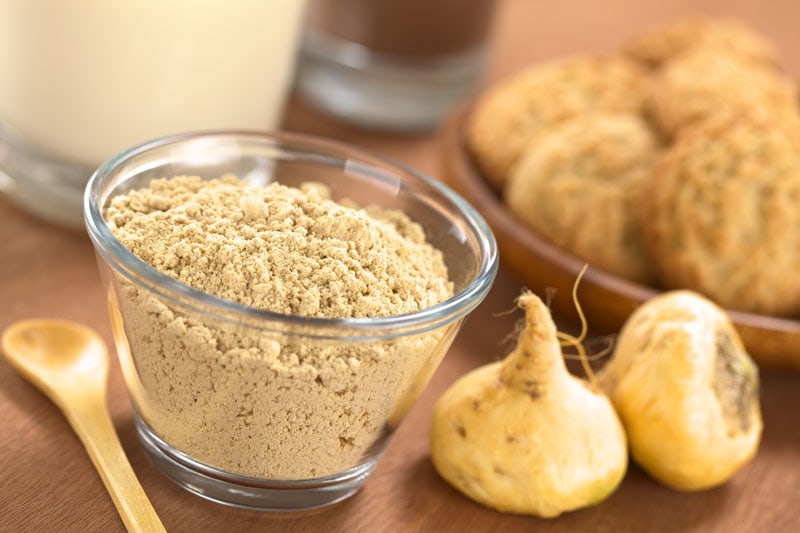
There are several things you can do to mitigate negative impacts. First and foremost is to use common sense. Go over the purported benefits of maca root and see what the supplement can do for you. Maca contains more than 55 phytochemicals, or plant-based nutrients. Phytochemicals can be antioxidants that help remove harmful substances from the body, they can restore hormone levels and help the body process nutrients more efficiently. Scientists know how the major nutrients of maca root work, but the phytochemicals remain more of a mystery.
Remember, too, that foods may help prevent diseases based on the nutrients they contain. Maca powder should not replace a normal, healthy diet. It should supplement what you’re already eating. Maca may increase certain nutrients you eat every day, and that can change things within your body chemistry over time. Consulting medical professionals, including a registered dietitian, is a prudent course of action.
Start slowly with lower dosages when you start taking maca supplements. Most pills are 450 milligrams, although you can find ones that go up to 1,000 milligrams. If you want to start with maca dosages below 450 milligrams, try the powder in loose form. The powder lets you give precise doses based on your own tastes.
Research the best supplements to take. Not all supplements are the same, and not all manufacturers follow the same protocols when making maca supplements.
Seek Professional Advice
As always, you should consult with your doctor before making any huge changes to your diet. If you notice anything different about your body after making changes to your diet, talk to your doctor to see if he or she can point to a specific cause. Your doctor already knows your medical history, and your doctor can read the latest medical studies on certain supplements and their secondary effects.
Another thing to note is that the U.S. Food and Drug Administration does not evaluate the statements made by supplement manufacturers. The agency does investigate false claims, and it does regulate what verbiage can go on the packaging, but the FDA does not guarantee anything in writing as it pertains to how a supplement affects your body.
Maca for Athletes

Whether you want to improve your front squat, increase your speed, start bodybuilding, or simply gain muscle mass, you might want to take a look at maca as a potential supplement to your training regime. This Peruvian wonder-supplement is making ground in the nutrition arena and gaining popularity among experts and novices as an effective aid to athletic performance. We foresee a future with maca as a leading supplement for athletes of all disciplines. Many pro athletes claim that the root has helped them to gain stamina and make for a better overall performance; others claim it has amazing post-workout properties.
“Maca is often consumed by athletes following diets that encourage raw, clean, unprocessed foods.”
Maca root’s scientific name is Lepidium Meyenii, but it has many different local names from its native location, Peru. The root grows in the heights of the Andes where it is harvested to be used in the preparation of a variety of foods such as breakfast cereals and yogurts, and cookies or other desserts. Some variations of maca such as the cream-colored root are sweeter to taste, while the darkest variations: red, purple, or black, are often favored by athletes due to the energy-increasing and stamina-enhancing properties. Darker-colored maca roots are also sweet but have a more pronounced bitter taste. Darker varieties also have a higher level of iodine than the cream-colored varieties.
Maca root is preferred by athletes following diets that encourage raw, clean, unprocessed foods.
- Until recently, genetically-modified maca was rarely found. Try to buy from a reputable company that works directly with Peruvian farmers can help you ensure that your product is pure and untainted. And most of all filled with the nutrients that will help your athletic performance.
- Maca typically grows in locations that are not conducive to the growth of pests and weeds, so there is very little need for pesticides or chemicals to remove weeds. In addition, there are quite a few farmers who will plant potatoes with their maca root, because potato crops repel the only pests that could damage their maca crops.
- The plant is a hearty crop, so farmers don’t often use fertilizers. Many farmers use alpaca or sheep manure to fertilize their cropland.
- Maca root contains many different nutrients, including high levels of protein (about 18 percent), carbohydrates (76 percent), and fiber (9 percent). It also has many different fatty acids, amino acids, and vitamins and minerals.
Maca is available in several different variations, from raw, which hasn’t been heated and provides the greatest benefit, to gelatinized maca, which removes some of the enzymes but provides a more gentle product for those with sensitivities.
The Important Nutrients Maca Root Provides to Athletes
As an adaptogen, maca allows individuals who consume the herb to better adapt and respond to different stressors. While this can include personal and professional situations that might cause emotional stress, it can also include activities and situations that stress the body, like strenuous workouts that push your physical systems to their limits. Because of that, athletes appreciate the many different nutrients in maca root, such as:
- Calcium: helps stimulate the growth and formation of bones and help prevent osteoporosis. The recommended daily intake of calcium for athletes is 1,200 to 1,500 mg each day; maca root contains about 450 mg per 100 grams of maca root.
- Iron: A lack of iron can cause anemia, especially in athletes with high training levels. Iron can range between 10 to 15 mg, which can be easily consumed in food but can be found in maca root, at about 25 mg in 100 grams of the root.
- Magnesium: Magnesium is a mineral that helps produce a variety of elements that are essential to the health of muscles, bones, and red blood cells. Low magnesium levels can be responsible for cramps, nausea, fatigue, and a higher risk of osteoporosis and anemia. Athletes should consume between 500 and 800 mg each day, and maca root has about 104 mg of the mineral in 100 grams.
- Potassium: This mineral helps to control the body water and regulate muscle contractions. Athletes should increase their potassium intake during exercise, to about 150 mg per hour of exercise and as much as 435 mg for every hour of exercise completed. While this should be discussed with a medical professional, maca root can provide 1500 mg of potassium in every 100 grams.
- Selenium: Selenium can help athletes improve their immune systems, repair damage to cells, and can help counteract the effects of free radicals. Athletes should consume about 200 mcg of selenium, and 100 grams of maca root can give you 10 percent of your selenium needs.
- Sodium: Like potassium, sodium is also an essential element in helping to maintain your bodily fliud levels. Low sodium during strenuous and lengthy endurance events can cause serious health issues, which is why athletes need about 80 to 100 mg of sodium in their hydration fluid and between 100 and 300 mg each hour from other nutrient sources. One hundred grams of maca root provides 25 mg of sodium.
- Zinc: About 30 to 60 mg of zinc each day can help athletes in their tissue repair and by converting food to energy more quickly, which can improve immunity and endurance. Maca root provides about 12 mg per 100 grams.
Athletic Disciplines that Can Benefit from Maca Root
- Running, Rock Climbing, Endurance and Trail Runs: Various running forums and publications have touted the wonders of maca root for runners, noting that it supports the endocrine system, the thyroid and adrenals, and the nervous system, and that, because of its unique growing conditions, it can tolerate cold climates and extreme altitudes very well, making it an ideal option for outdoor adventurers.
- Bodybuilding: Because of its endocrine balancing abilities, maca root is becoming a part of the bodybuilding lifestyle, as well. Lifters appreciate the muscle gains resulting from their taking maca pre workout. Post workout maca smoothies are popular also. Maca in powdered form is an ideal thickener for blending with fruits, vegetables, and indeed other superfoods. Maca’s muscle gaining properties are in demand in the vegan bodybuilding world due to its high protein plant nutrients.
- Yoga: Many yoga practitioners recommend maca root as a superfood that can help yoga enthusiasts improve their suppleness, endurance and strength.
“Maca root is a sacral chakra herb that is said to balance the hormones and increase libido and fertility,” “Maca’s increased energy will allow you to connect more deeply to your spiritual side.” – Yoganonymous
- General exercise and well being: maca is a good source of protein. The high levels of vitamin B6 can help improve your energy and mood, and the antioxidants may help to keep you from feeling sore (DOMS) after a tough workout by increasing the number of cells that help to repair your muscles.
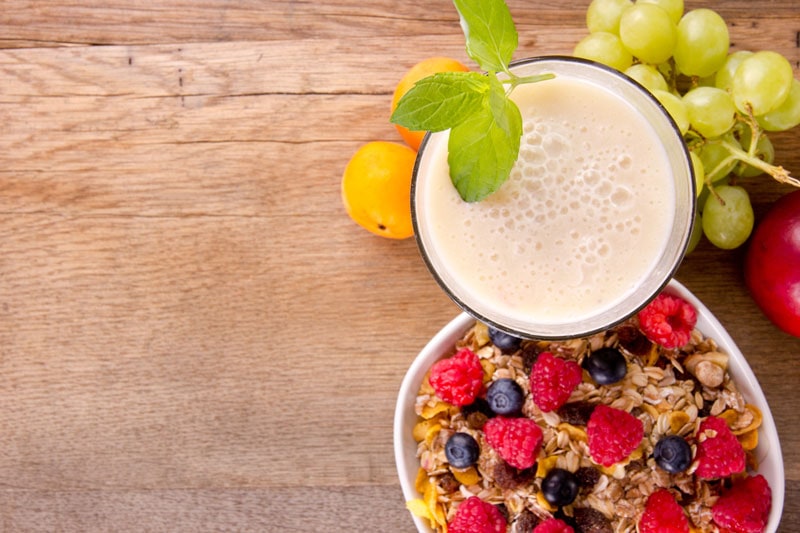
Best Ways for Athletes to Consume Maca Root
There are several ways in which athletes can take maca to get maximum results and see the biggest improvements in their athletic performance:
- Make Maca superfood smoothies from nut milk or alternative milk, a frozen banana, and chia or flax seeds with one-half of a tablespoon of maca root. It’s quick, easy, and if you add you can make this a suitable meal replacement drink. It’s a great pre-workout or post-workout smoothie.
- A raw-food Enzyme Pie has a pecan crust that includes powdered maca and combines a mango-lime filling with a kiwi topping. It’s free of common allergens or irritants and gives you a power-packed meal that’s good for breakfast, a snack, or dessert.
- Carrot Maca juice combines the power of maca root with carrots and raw cashews to give you a sweet, toasty nutrient-dense drink.
- Consider making maca root a part of your main dish, with a pumpkin-lentil soup, mixing it with guacamole, or adding it to spaghetti sauce, hummus, or other savory dishes.
- Many athletes have found that maca root is best taken as a capsule. On average, they have between 450 and 5000 mg of maca extract each, although this can vary by manufacturer. These capsules are best taken with food, and, like every supplement, should be discussed first with your doctor or medical professional.
- For athletes who have trouble absorbing raw maca, gelatinized maca capsules may be the best alternative. The gelatinized form also tastes less bitter and can taste sweeter than raw maca.
Frequently Asked Questions
Does maca have caffeine?
No. Maca does not contain caffeine. However, while maca does not contain stimulant properties, it offers a mild stimulant effect in a similar way to caffeine thanks to its blood glucose moderating effects.
Is maca safe?
According to the journal Pharmaceuticals, maca extract consumption relative to the placebo improved quality of life parameters. Maca extracts were well tolerated and safe.
Is maca keto friendly?
The maca root is an edible plant root. The ketogenic diet follows a strict eating protocol that focuses on meats, fats, and plants in general. Maca, being the root of a plant is suitable for keto eating. But care must be taken to consume the right amounts. Maca is high in carbohydrate and fat (something the slimmers of the world rave about), so the macronutrient ratios are not keto-friendly. However, only small amounts are used in most recipes or even when taken orally.
Maca root contains adaptogens, substances that are recognized to help the body cope with stress. A study from the Swedish Herbal Institute Research & Development found that “adaptogens exhibit neuroprotective, anti-fatigue, antidepressive, anxiolytic, nootropic and CNS stimulating activity“. Why is this important? Well, apart from the obvious health benefits, adaptogens can help the body adapt to ketosis.
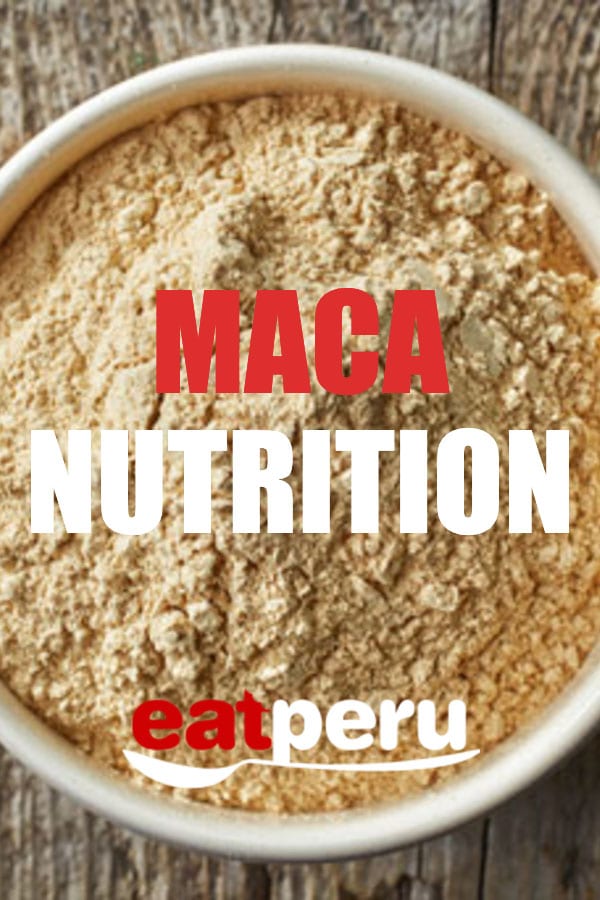

Peruvian foodie. I’ve been writing about the food of Peru for over 10 years. Read more about the Eat Peru team here

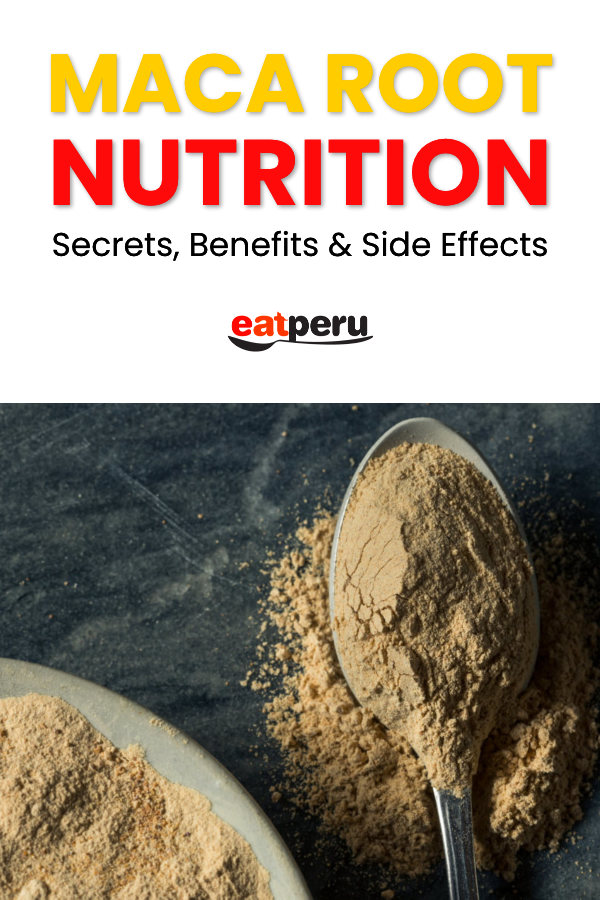
Edison
Is Maca Legal in the US?
Peruvian Food Lover
Yes. It’s not a drug and is legal to consume in the US. It’s not legal to grow it there however as the plant is a protected heritage crop of Peru.